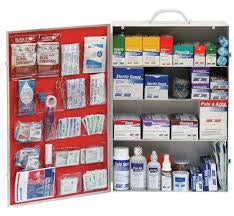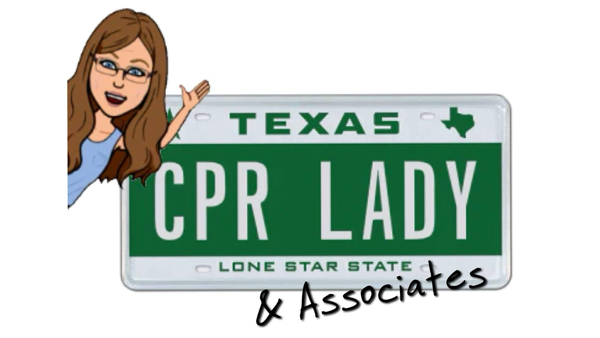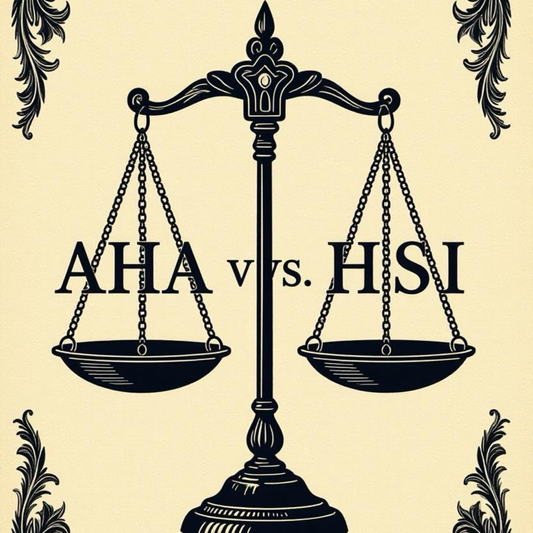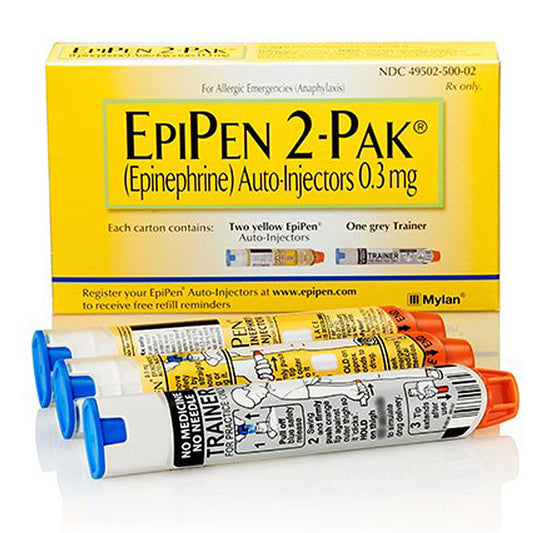
First Aid Kit Requirements ANSI Z308.1
William BeauregardShare
ANSI Z308.1
History
The International Safety Equipment Association (ISEA), in conjunction with leading industry stakeholders, developed this standard in 2014, updating and expanding ANSI/ISEA Z308.1-2009. A subsequent revision in 2015 corrected a minor technical revision to the 2014 edition.
In an effort to emphasize the importance of the contents included in the first aid kit, rather than the configuration in which they are provided, specific requirements for unitized first aid kits have been removed from the 2014 edition. Guidance on color-coding of first aid supplies for these configurations of kits is included in the appendix to provide users and suppliers with an easy reference when identifying and stocking first aid items.
Scope
The standard classifies first aid kits based on the assortment and quantity of first aid supplies intended to deal with most types of injuries and sudden illnesses encountered in the workplace including: major wounds, minor wounds (cuts and abrasions), minor burns, sprains and strains, and eye injuries.
Why this standard is important
The assortment and quantity of supplies included in a first aid kit were chosen based upon a review of increased workplace incidents requiring first aid treatment, similar international standards and current practices in treating injuries. This revision introduces two classes of first aid kits: Class A kits with contents designed to deal with most common types of workplace injuries, and Class B kits with a broader range and quantity of supplies to deal with injuries in more complex or high-risk environments. By expanding the items in a basic first aid kit, employees will have greater access to items needed to treat common workplace injuries.
What employers should do
In deciding which class of kit is more appropriate for a given workplace, employers should consider the risks and task load of the work environment and the potential severity and likelihood of occurrence of an injury. Employers should also consider whether multiple first aid kits are needed, based on the number of employees, physical layout of the work environment and the remoteness of the worksite to emergency services. These same considerations can be taken into account when determining if a first aid kit should be augmented with additional supplies, as noted in the appendix of this standard.
Types of first aid kit containers
- Type I intended for use in stationary, indoor settings where the potential for damage of kit supplies due to environmental factors and rough handling is minimal.
- Type II intended for portable use in indoor settings where the potential for damage of kit supplies due to environmental factors and rough handling is minimal.
- Type III intended for portable use in mobile, indoor and/or outdoor settings where the potential for damage of kit supplies due to environmental factors is not probable.
- Type IV intended for portable use in the mobile industries and/or outdoor settings where the potential for damage to kit supplies due to environmental factors and rough handling is significant.
General requirements
Refer to standard for Class A Kits and Class B kits minimum quantities of first aid supplies.
Adhesive Bandage- Each adhesive bandage shall consist of a non-adherent absorbent pad attached to the central area of a strip of adhesive material 3.0 in. ± 1/16 in. (76 mm ± 1.6 mm) by 1.0 in. ± 1/32 in. (25.4 mm ± 0.8 cm).
Adhesive Tape- Adhesive tape shall be at least 3/8 in. (9.5 mm) wide and a minimum of 2.5 yd (2.3 m) long and meet the applicable requirements for adhesive tape as defined in the current edition of the USP/NF.
Antibiotic Application- Each antibiotic application shall meet the applicable requirements as defined in the current edition of the USP/NF.
Antiseptic- Each antiseptic shall meet the requirements of all applicable FDA requirements and shall be contained in an individual-use, non-reusable application containing at least 1/57 oz (0.5 g) of antiseptic.
Breathing Barrier- The breathing barrier shall be a single use disposable medical device listed with the U.S. Food and Drug Administration (FDA) and have a current valid 510 (k) with the purpose of delivering ventilations by a responder to a non-breathing victim (e.g., rescue breaths and CPR ventilations).
Burn Dressing (gel soaked)- Burn dressings shall be a sterile gel-soaked pad made of a material that prevents fibers from becoming embedded in the burn wound. Gel material shall be water-soluable.
Burn Treatment- Each burn treatment shall be a water soluble compound packaged in individual-use applications containing at least 1/32 oz (0.9 g).
Cold Pack- Each cold pack shall be at least 4 x 5 in. (10 x 12.5 cm) in size and shall reach a temperature between 20 - 40˚F (-6 - 4˚C) within 10 seconds of activation and shall maintain this temperature for a period of at least 10 minutes.
Eye Covering with means of attachment- Eye covering(s) shall have the ability to cover both eyes, an area of at least 2.9 sq. in. (19 sq. cm) per eye, and conform to each eye cavity.
Eye/Skin Wash- A sterile, isotonic, buffered solution as specified in FDA regulation 21 CFR 349 shall be contained in at least 0.5 fl. oz. (15 ml) individual-use applications.
First Aid Guide- Guidance for immediate care given to a victim of injury or sudden illness until arrival of more advance care, if needed, shall be included in the kits.
Hand Sanitizer- Hand sanitizers shall be water-soluable with a minimum 62% ethyl alcohol as the active ingredient.
Medical Exam Gloves- Gloves shall meet the requirements of FDA regulation 21 CFR 800.20 for medical grade gloves.
Roller Bandage (2 inch, 4 inch)- Each bandage shall be constructed from a material at least the equivalent strength of Type I USP 28-NF23 (44/36) gauze as defined by the current edition of USP/NF. Each bandage shall be individually packaged and sealed.
Scissors- Scissors shall be autoclavable, at least 3.5 in. long (8.9 cm), capable of cutting through clothing, feature a blunt end to protect a person from accidental injury and of medical professional quality.
Splint- Each splint shall be padded, made of malleable material and shall be at least 4.0 in. x 24 in. (10.2 cm x 61.0 cm).
Sterile Pad- Each sterile pad shall be at least 3 x 3 in. (7.5 x 7.5 cm) in size and shall have at least the absorbency of absorbent gauze as defined by the current edition of the USP/NF.
Tourniquet- Each tourniquet shall be at least 1 in. (2.5 cm) wide.
Trauma Pad- Each trauma pad shall be at least 45 sq. in. (290.33 sq cm) with no side smaller than 5 in. (12.7 sq cm) and shall have at least the absorbency of absorbent gauze as defined by the current edition of the USP/NF.
Triangular Bandage- Each bandage shall be made from muslin at least 60/48 weave or a material of equivalent mechanical strength.
First aid kit marking and labeling
All labeling and markings shall be legible and permanent. Where adhesive labels are used they shall not be easily removed. Each kit and/or location shall be visibly marked as a place where first aid supplies are located.



